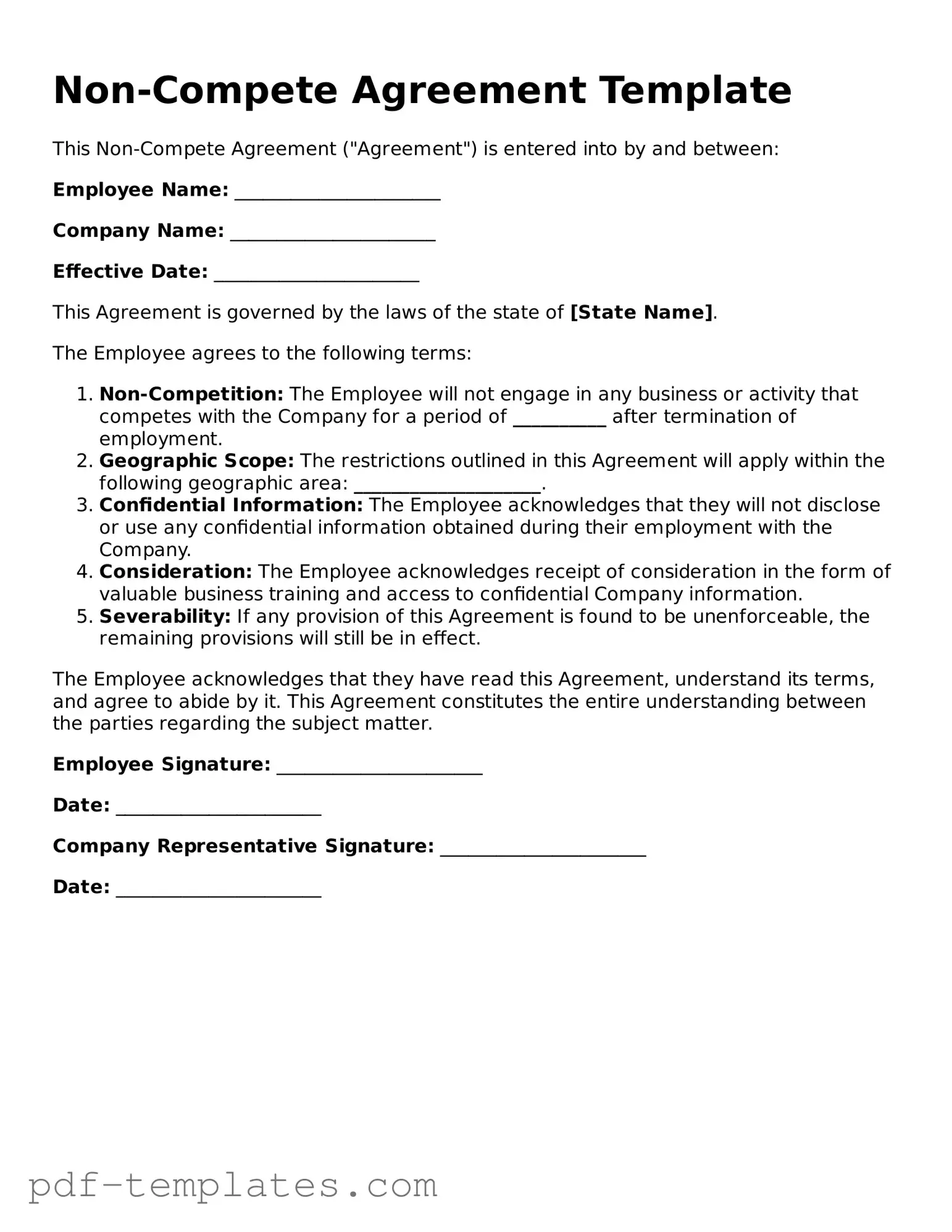A Non-Disclosure Agreement (NDA) shares similarities with a Non-compete Agreement in that both documents aim to protect sensitive information. While a Non-compete Agreement restricts an individual from engaging in competitive activities after leaving a company, an NDA prevents the sharing of confidential information during and after employment. Both agreements foster trust and safeguard a company's proprietary information, ensuring that employees do not misuse or disclose crucial business secrets.
A Non-Solicitation Agreement is another document closely related to a Non-compete Agreement. This type of agreement prohibits an employee from soliciting clients or customers of their former employer for a specified period after leaving the company. Both agreements are designed to protect a business's interests and maintain its client base, but the Non-solicitation Agreement focuses specifically on client relationships rather than broader competitive activities.
In navigating legal documentation, understanding the nuances of agreements such as the Non-disclosure Agreement and the CA DMV SR1 form is essential. The CA DMV SR1 form, which serves as a mandatory report for traffic accidents in California, must be completed accurately to avoid penalties. For additional resources related to various documents and forms, you can reference All California Forms.
An Employment Contract often includes clauses that resemble those found in a Non-compete Agreement. This document outlines the terms of employment, including job responsibilities, compensation, and any restrictions on post-employment activities. While the Employment Contract serves a broader purpose by detailing the overall relationship between employer and employee, it may also contain specific provisions that restrict competition, thus aligning with the intent of a Non-compete Agreement.
A Confidentiality Agreement also parallels a Non-compete Agreement in its goal of protecting sensitive information. This document ensures that employees do not disclose or misuse confidential information during or after their employment. While a Non-compete Agreement restricts competitive actions, a Confidentiality Agreement focuses on the obligation to keep proprietary information secret, thereby providing a comprehensive approach to protecting a company's interests.
Finally, a Separation Agreement may include elements similar to a Non-compete Agreement. This document is typically used when an employee leaves a company and outlines the terms of their departure, including any post-employment restrictions. It may contain clauses that prevent the former employee from engaging in competitive activities or soliciting clients, effectively combining aspects of both agreements to ensure a smooth transition and protect the company’s interests.
